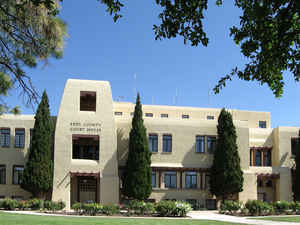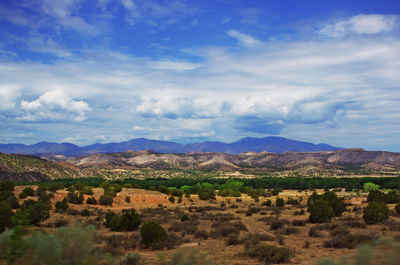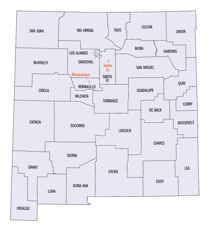New Mexico Counties
There is thirty-three counties in the state of New Mexico. There were originally nine counties formed in 1852. Santa Ana County, New Mexico Territory, one of the nine original counties, was annexed in 1876 to Bernalillo County, New Mexico.Eddy County, New Mexico
Eddy County Education, Geography, and History
Eddy County is a county located in the state of New Mexico. Based on the 2010 census, the population was 53,829. Its county seat and
largest city is Carlsbad. The county was created in 1891 and later organized in 1891.It is north of the Texas state line.
Eddy County comprises the Carlsbad-Artesia, NM Micropolitan Statistical Area.
Etymology - Origin of Eddy County Name
Named for Charles B. Eddy, a developer in the area
Demographics:
County QuickFacts: CensusBureau Quick Facts
Eddy County History
Eddy County was created 25 February 1889. Charles W. Eddy was a rancher and promoted southeastern New Mexico. Eddy County has large deposits of raw materials like potash, and it is a producer of oil and oil products. The area is excellent for farming with plenty of irrigation water and abundant sunshine. Carlsbad is the county seat. Carlsbad Caverns is a major attraction.
In 1866, Charles Goodnight and Oliver Loving drove vast herds of cattle along the Pecos and set up "cow camps" in Seven Rivers and what is
now Carlsbad. John Chisum soon joined them and brought an estimated 100,000 head of cattle of his own through the Pecos Valley.
In 1881, Charles B. Eddy came to the area, and with his brother, John, and partner Amos Bissell, developed the Eddy-Bissell Cattle Company. In
1884, the Eddy brothers and Bissell broke ground on the Halagueno Ranch which encompassed an area from Seven Rivers to La Huerta (a suburb of
Carlsbad). In 1887, Eddy built the Halagueno diversion ditch on the Pecos, three miles above the site of the Avalon Dam (which was completed
in 1890) and incorporated the venture, calling it the Pecos Valley Land and Ditch Company. Eddy was looking to entice Europeans to settle the
area, and with the new Halagueno Ranch and the Pecos Valley Land and Ditch Company established, he sought funds from a Swiss bank to help
attract them to the clean air and sunny climate.
In 1888, Patrick Garrett (known as the sheriff who had shot Billy the Kid) along with promoter Charles Greene, joined forces with Eddy to
design and build a system of canals and flumes to divert water to their ranches and properties. Greene was able to procure investors from the
east, one of which was Robert W. Tansill (manufacturer of the "Punch 5 ¢ Cigar"). These men, along with another big investor, J.J. Hagerman,
laid the plans for a new town on the west bank of the Pecos River. The men had the town incorporated as Eddy on September 15, 1888.
The county was named for cattle rancher Charles B. Eddy. When the territorial legislature set the boundaries of Eddy County, in 1889, Seven
Rivers was named the county seat. During an election in 1890 for new county commissioners, a referendum was on the ballot to change the seat
from Seven Rivers to the town of Eddy. The referendum passed by a vote of 331 to 83. In that year, the census said Eddy had only 278 people
and they cast 241 of the winning votes. The referendum also included the building of a courthouse. Charles Eddy donated the land which
consisted of an entire town block. The county commissioners authorized a contract for $30,000 to build a brick courthouse. (In 1899, the town
of Eddy changed its name to Carlsbad.)
Geography: Land and Water
As reported by the Census Bureau, the county has a total area of 4,198 square miles (10,870 km2), of which 4,176 square miles (10,820 km2) is land and 22 square miles (57 km2) (0.5%) is covered by water. The lowest point in the state of New Mexico is located on the Red Bluff Reservoir in Eddy County, where the impounded Pecos River flows out of New Mexico and into Texas.
Neighboring Counties
Bordering counties are as follows:
- Otero County - west
- Chaves County - north
- Lea County - east
- Loving County, Texas - southeast
- Reeves County, Texas - south
- Culberson County, Texas - south
Education







